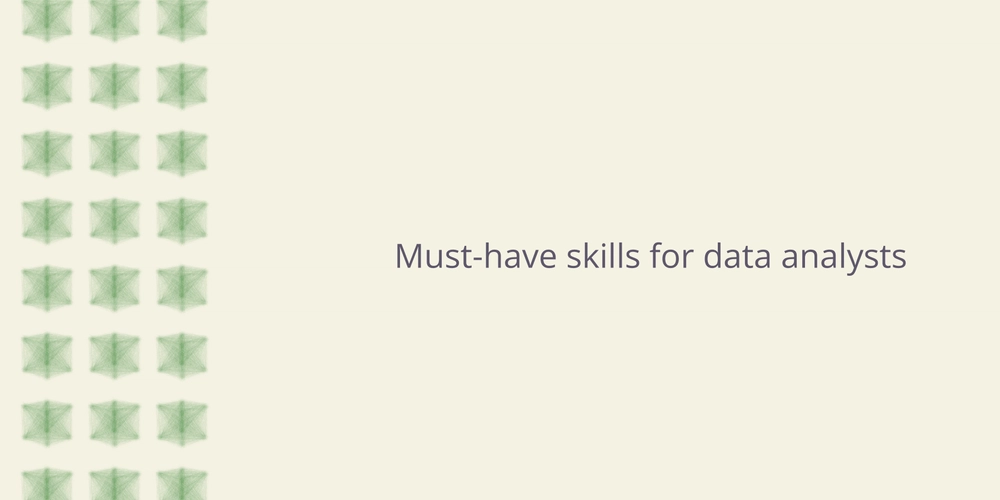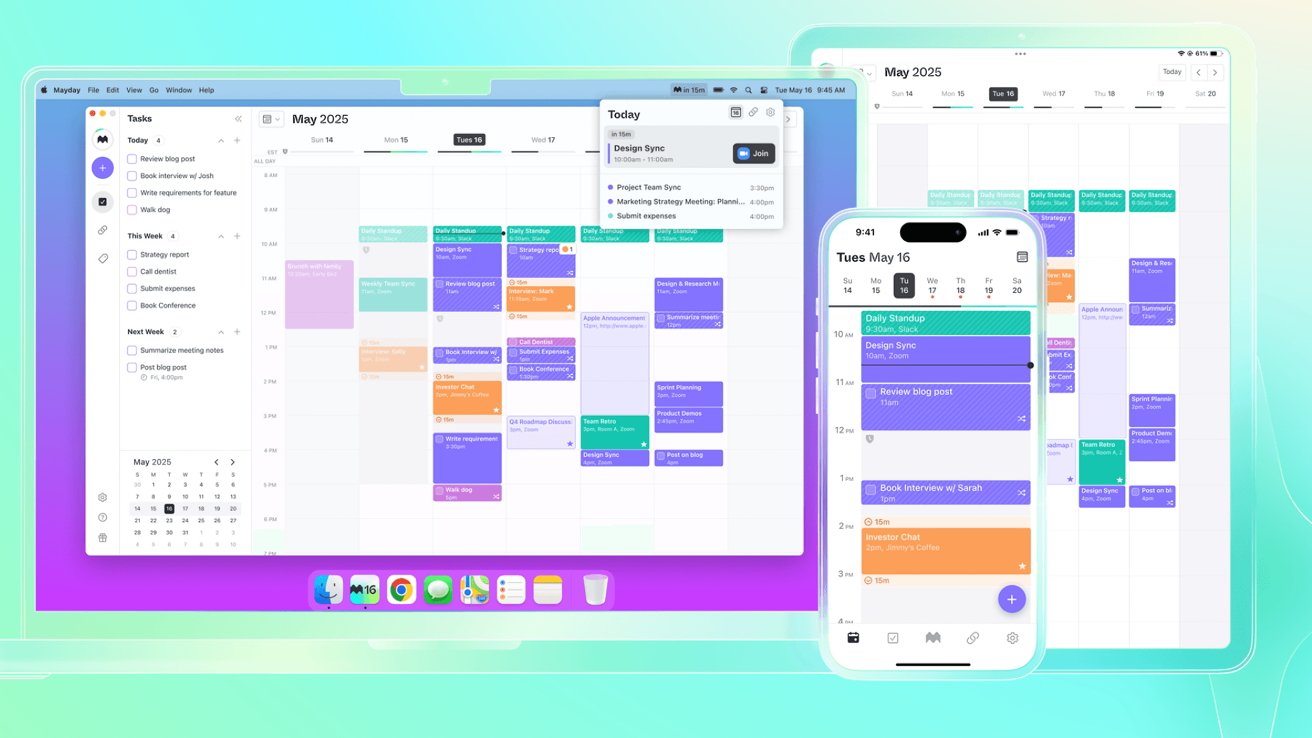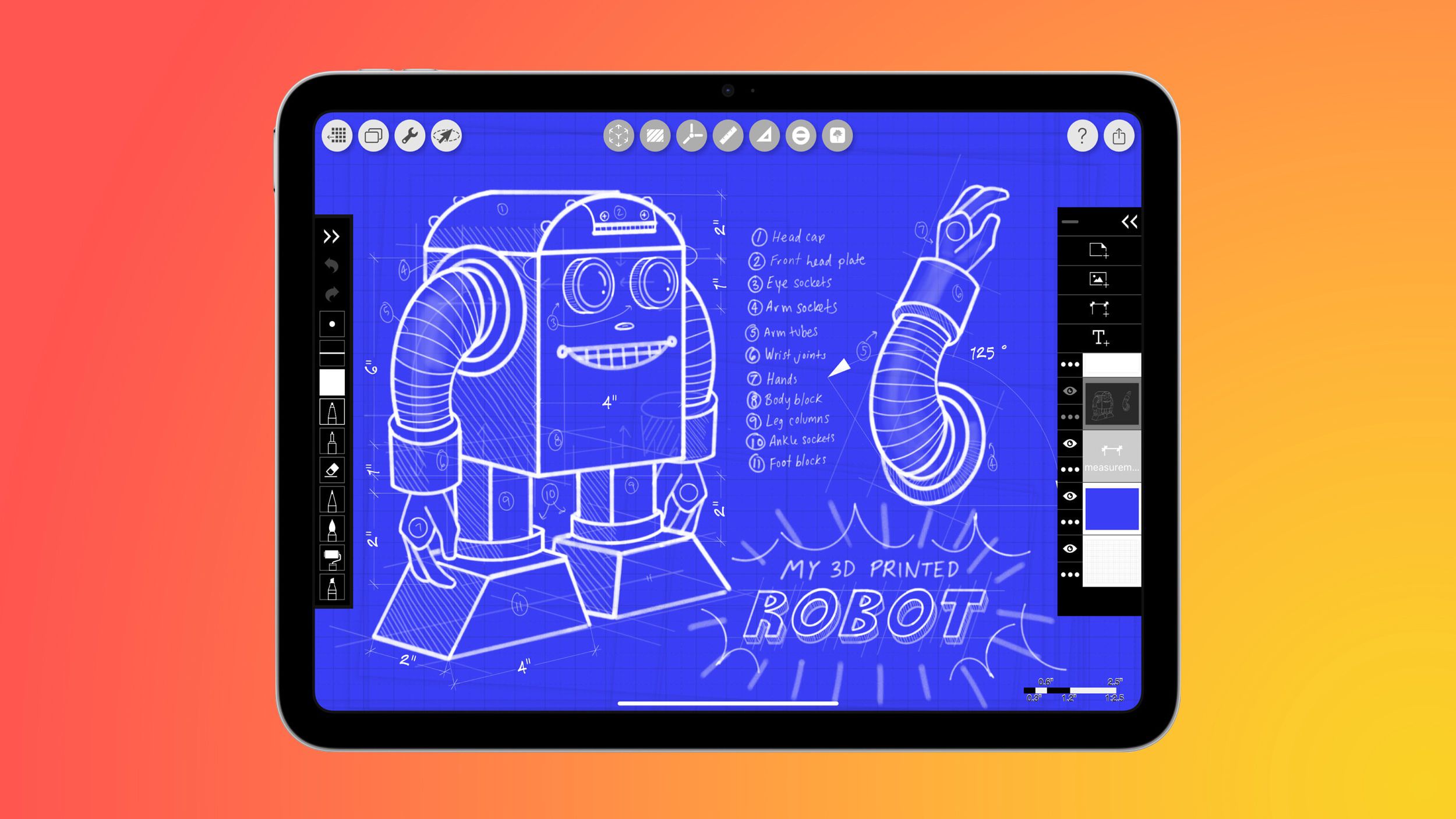Must-have skills for data analysts in 2025: A complete guide
Do you want to stay competitive in the rapidly evolving field of data analysis? As organizations increasingly rely on data-driven decision-making, the skills needed by data analysts have become more diverse and sophisticated than ever before. In 2025, successful data analysts need a versatile combination of technical skills and soft skills to transform raw data into actionable insights that drive business value. This comprehensive guide explores the essential data analyst skills you need to thrive in today's business environments. We'll cover both the technical foundations and the equally important soft skills that set exceptional analysts apart. This post also highlights how you can become more efficient and effective by using modern tools such as Quadratic AI. Technical skills for data analysts Programming and data manipulation Technical skills for data analyst roles have become increasingly code-focused over the past few years. While spreadsheets remain valuable for quick analyses, programming languages offer greater flexibility, reproducibility, and the ability to handle larger datasets. Programming languages are the foundation of data analytics skills. SQL is the primary language for querying databases, and it enables analysts to extract the data they need from various sources. A strong command of SQL enables you to write complex queries with joins across multiple tables, perform aggregations and calculations, create and modify database structures, and optimize queries for better performance. Python is the most versatile language for data analysis. Being a data analyst with Python and SQL skills makes you especially valuable to employers. Key Python libraries that every analyst should know include Pandas for data manipulation and analysis, NumPy for numerical calculations, Matplotlib/Seaborn for data visualization, and Scikit-learn for implementing machine learning algorithms. The R language is useful for statistical analysis and data visualization. Many organizations use both languages, so familiarity with R can be an advantage in certain roles. Data visualization The ability to create compelling visualizations is among the top skills for data analyst positions. Effective data visualization transforms complex findings into intuitive visual stories that stakeholders can understand and act upon. Key data visualization software include Tableau and Power BI for creating interactive dashboards, as well as Python libraries like Matplotlib, Seaborn, and Plotly. Modern Power BI and Tableau alternatives like Quadratic combine the best of spreadsheets and programming, allowing analysts to create different types of visualizations directly from their data using code or AI assistance, making it easier to communicate findings effectively. Statistical analysis and machine learning A strong foundation in statistics is essential for meaningful data analysis. Understanding concepts like descriptive statistics, probability distributions, hypothesis testing, regression analysis, and experimental design helps you avoid common pitfalls in data interpretation and ensures your analyses lead to valid conclusions. While deep expertise in data analysis doesn't necessarily require advanced machine learning skills, understanding the fundamentals is increasingly important. Familiarity with supervised and unsupervised learning approaches, common algorithms like linear regression and decision trees, feature selection and engineering, model evaluation metrics, and basic neural networks enables you to move beyond descriptive analytics to predictive and prescriptive approaches that provide greater business value. Data cleaning and preparation Data preparation often consumes a large portion of an analyst's time. Proficiency in cleaning, transforming, and structuring data is a critical skill set. This includes handling missing values, detecting and addressing outliers, normalizing and standardizing data, feature engineering, and managing data types and formats. Data cleaning tools like Quadratic streamline these processes through AI assistance, allowing analysts to focus more on generating insights rather than mundane preparation tasks. Data governance and security awareness In today's regulatory environment, understanding data governance principles has become an essential component of the data analyst’s skill set. Analysts must be familiar with regulations like GDPR (General Data Protection Regulation), CCPA (California Consumer Privacy Act), and industry-specific compliance requirements that govern data usage. This includes implementing appropriate data anonymization techniques, maintaining proper documentation of data lineage, understanding consent requirements for data usage, and collaborating with legal and security teams to ensure compliance. As organizations face increasing scrutiny over their data practices, analysts who can navigate these complexities

Do you want to stay competitive in the rapidly evolving field of data analysis? As organizations increasingly rely on data-driven decision-making, the skills needed by data analysts have become more diverse and sophisticated than ever before. In 2025, successful data analysts need a versatile combination of technical skills and soft skills to transform raw data into actionable insights that drive business value.
This comprehensive guide explores the essential data analyst skills you need to thrive in today's business environments. We'll cover both the technical foundations and the equally important soft skills that set exceptional analysts apart. This post also highlights how you can become more efficient and effective by using modern tools such as Quadratic AI.
Technical skills for data analysts
Programming and data manipulation
Technical skills for data analyst roles have become increasingly code-focused over the past few years. While spreadsheets remain valuable for quick analyses, programming languages offer greater flexibility, reproducibility, and the ability to handle larger datasets.
Programming languages are the foundation of data analytics skills. SQL is the primary language for querying databases, and it enables analysts to extract the data they need from various sources. A strong command of SQL enables you to write complex queries with joins across multiple tables, perform aggregations and calculations, create and modify database structures, and optimize queries for better performance.
Python is the most versatile language for data analysis. Being a data analyst with Python and SQL skills makes you especially valuable to employers. Key Python libraries that every analyst should know include Pandas for data manipulation and analysis, NumPy for numerical calculations, Matplotlib/Seaborn for data visualization, and Scikit-learn for implementing machine learning algorithms.
The R language is useful for statistical analysis and data visualization. Many organizations use both languages, so familiarity with R can be an advantage in certain roles.
Data visualization
The ability to create compelling visualizations is among the top skills for data analyst positions. Effective data visualization transforms complex findings into intuitive visual stories that stakeholders can understand and act upon. Key data visualization software include Tableau and Power BI for creating interactive dashboards, as well as Python libraries like Matplotlib, Seaborn, and Plotly.
Modern Power BI and Tableau alternatives like Quadratic combine the best of spreadsheets and programming, allowing analysts to create different types of visualizations directly from their data using code or AI assistance, making it easier to communicate findings effectively.
Statistical analysis and machine learning
A strong foundation in statistics is essential for meaningful data analysis. Understanding concepts like descriptive statistics, probability distributions, hypothesis testing, regression analysis, and experimental design helps you avoid common pitfalls in data interpretation and ensures your analyses lead to valid conclusions.
While deep expertise in data analysis doesn't necessarily require advanced machine learning skills, understanding the fundamentals is increasingly important. Familiarity with supervised and unsupervised learning approaches, common algorithms like linear regression and decision trees, feature selection and engineering, model evaluation metrics, and basic neural networks enables you to move beyond descriptive analytics to predictive and prescriptive approaches that provide greater business value.
Data cleaning and preparation
Data preparation often consumes a large portion of an analyst's time. Proficiency in cleaning, transforming, and structuring data is a critical skill set. This includes handling missing values, detecting and addressing outliers, normalizing and standardizing data, feature engineering, and managing data types and formats.
Data cleaning tools like Quadratic streamline these processes through AI assistance, allowing analysts to focus more on generating insights rather than mundane preparation tasks.
Data governance and security awareness
In today's regulatory environment, understanding data governance principles has become an essential component of the data analyst’s skill set. Analysts must be familiar with regulations like GDPR (General Data Protection Regulation), CCPA (California Consumer Privacy Act), and industry-specific compliance requirements that govern data usage.
This includes implementing appropriate data anonymization techniques, maintaining proper documentation of data lineage, understanding consent requirements for data usage, and collaborating with legal and security teams to ensure compliance. As organizations face increasing scrutiny over their data practices, analysts who can navigate these complexities while still delivering insights become particularly valuable.
Cloud computing environments
Modern data analysis increasingly takes place in cloud environments. Familiarity with major cloud platforms like AWS, Azure, and Google Cloud Platform has become one of the key technical skills for data analyst roles. This includes working with cloud-based data warehouses, understanding serverless computing options, configuring and optimizing cloud resources, and leveraging cloud-native analytics services.
Advanced SQL capabilities
While basic SQL is mentioned earlier, advanced SQL capabilities separate junior analysts from experienced professionals. These advanced skills include writing complex window functions for sophisticated calculations, using Common Table Expressions (CTEs) for more readable and maintainable queries, optimizing query performance for large datasets, understanding database indexing strategies, and leveraging specialized functions for different systems. These capabilities are essential skills required for data analyst positions working with enterprise-scale data.
Soft skills for data analysts
While technical capabilities form the foundation of your data analyst skill set, soft skills for data analyst roles often determine your ultimate impact and career trajectory.
Communication and business acumen
Being a data analyst with strong communication skills sets you apart in the job market. The ability to translate complex findings into clear, actionable insights is invaluable. This means crafting compelling data stories, adapting your communication style to different audiences, creating clear documentation, presenting findings confidently, and explaining technical concepts in accessible language.
Understanding the business context transforms a technically competent analyst into a strategic partner. Strong business acumen includes knowledge of industry trends and challenges, understanding of key performance indicators, ability to connect analytical findings to business objectives, awareness of stakeholder priorities, and insight into how decisions impact different areas of the organization.
Critical thinking and project management
Data analysis is fundamentally about solving problems. Strong critical thinking helps you formulate the right questions to guide your analysis, identify patterns and anomalies in data, question assumptions and recognize biases, draw meaningful conclusions, and propose actionable recommendations.
Data analysis projects often involve multiple stakeholders, datasets, and timelines. Effective project management means scoping projects effectively, breaking down complex analyses into manageable tasks, prioritizing work based on business impact, managing timelines and expectations, and collaborating effectively with cross-functional teams.
Adaptability and continuous learning
The field of data analysis evolves rapidly. Successful analysts demonstrate a willingness to learn new tools and technologies, flexibility in approaching different types of problems, openness to feedback and new perspectives, resilience when facing challenges, and commitment to staying current with industry developments.
Data storytelling
Beyond basic communication, data storytelling has emerged as a critical soft skill for data analysts. This involves structuring analyses as compelling narratives with clear beginnings, middles, and ends; selecting visualizations that best support your key points; creating a logical flow of information that guides audiences to important conclusions; incorporating relevant context and business implications; and using appropriate analogies and examples to make complex concepts relatable. Skilled data storytellers can transform even the most technical analyses into memorable presentations that drive action.
Essential tools for modern data analysts
The skill set for data analyst roles encompasses proficiency with various tools that enhance productivity and capabilities. These include SQL databases like MySQL and PostgreSQL, cloud data warehouses such as Snowflake and BigQuery, and visualization platforms like Tableau and Power BI.
Version control and collaborative tools
As data analysis becomes increasingly collaborative, proficiency with version control systems like Git has become an important part of the data analyst's technical skills toolkit. Understanding how to manage code repositories, track changes to analyses, collaborate on shared codebases, resolve conflicts, and maintain documentation helps ensure reproducibility and facilitates teamwork. Beyond Git, familiarity with project management tools, documentation platforms, and collaborative environments enables analysts to work effectively within cross-functional teams.
Data engineering fundamentals
While dedicated data engineers typically build and maintain data infrastructure, successful analysts benefit from understanding the fundamentals. This includes knowledge of ETL/ELT processes, data pipeline architecture, basic data modeling concepts, awareness of database optimization principles, and familiarity with data orchestration tools. These skills help analysts work more effectively with engineering teams and sometimes implement simpler data pipelines themselves, expanding their skills for data analyst roles into more technical territories.
Modern integrated platforms like Quadratic are changing how analysts work by combining spreadsheet functionality for familiar workflows, code execution capabilities for Python, SQL, and JavaScript, AI assistance for data preparation and analysis, visualization tools for creating compelling charts, and collaboration features for team-based analysis. These integrated environments help streamline the analysis process and make advanced data analyst technical skills more accessible, even to those early in their career.
How to improve data analysis skills
Looking to enhance your capabilities? There are several effective ways to learn how to improve data analysis skills. Structured learning through online courses on platforms like Coursera or DataCamp, relevant certifications in SQL or Tableau, bootcamps focused on data analytics, or advanced degrees for specialized roles provide a solid foundation.
Practical application is equally important. Working on personal projects using real datasets, participating in data science competitions on platforms like Kaggle, contributing to open-source data projects, and creating a portfolio showcasing your work helps solidify theoretical knowledge through hands-on experience.
Community engagement accelerates growth through joining data science communities in Slack groups or Reddit forums, attending meetups and conferences, participating in hackathons, and following industry leaders. Modern tools like Quadratic can enhance your learning by providing an integrated environment for various languages, offering AI assistance for code generation and analysis, supporting collaboration with peers, and streamlining workflows to focus on analytical concepts rather than tool-specific complexities.
Skills for your data analyst resume
When crafting your resume, highlighting the right skills for a data analyst resume is crucial. Consider organizing your data analyst skills bullet points into clear sections that showcase both technical and soft skills.
For technical data analytics skills, focus on programming languages like SQL and Python, data visualization tools such as Tableau and Power BI, statistical analysis and modeling techniques, database management and data warehousing experience, and proficiency with platforms like Quadratic and Excel. For soft skills, emphasize communication abilities including data storytelling and presentation, problem-solving and critical thinking capabilities, project management experience, collaboration and teamwork, and your adaptability and commitment to continuous learning.
In your projects section, document experiences that demonstrate your skills in action by describing the problem addressed, methods and tools used, key findings and impact, and quantifiable results where possible. Remember that the skills required for data analyst positions vary across industries and organizations, so tailor your resume to highlight the most relevant skills for each role you apply for.
The future of data analysis skills
The landscape of skills needed for data analyst roles continues to evolve. Several trends will shape the field in 2025 and beyond.
AI integration is increasingly transforming the data analysis workflow. Rather than replacing analysts, AI tools augment human capabilities by automating routine data preparation tasks, suggesting visualizations and analyses, generating code and SQL queries, identifying patterns and anomalies, and enhancing data exploration. Platforms like Quadratic exemplify this trend, providing AI assistance that helps analysts focus on higher-value tasks while handling routine operations more efficiently.
As data usage expands, skills related to ethical data practices and governance are becoming essential. Understanding privacy regulations, implementing data protection measures, recognizing and addressing algorithmic bias, ensuring transparent data practices, and maintaining data quality and lineage are increasingly critical components of an analyst's skill set.
While foundational skills remain important, many analysts are developing expertise in specific domains such as marketing analytics, financial analysis, healthcare data analysis, supply chain analytics, or people analytics. Domain specialization combines technical skills with industry-specific knowledge, creating unique value propositions for analysts.
Experimental design and A/B testing
As organizations seek to make more data-driven decisions, rigorous testing methodologies have become increasingly important skills needed for data analyst positions. Proficiency in experimental design includes formulating testable hypotheses, determining appropriate sample sizes, designing controlled experiments, implementing randomization techniques, and analyzing results with statistical rigor. A/B testing specifically has become essential for product, marketing, and UX teams, making analysts who can design, execute, and interpret these tests particularly valuable in driving evidence-based decisions.
Industry-specific analytical tools
While core data analytical skills remain consistent across sectors, the rising importance of industry-specific tools is creating new specialization opportunities. Depending on your focus area, this might include Google Analytics and attribution modeling tools for marketing analysts, Bloomberg Terminal and financial modeling packages for financial analysts, healthcare-specific data systems for medical analysts, or IoT analytics platforms for manufacturing analysts. These specialized toolsets combine with domain knowledge to create unique expertise that can significantly enhance your data analyst skills resume for targeted positions.
Conclusion
The most successful data analysts in 2025 will combine strong technical foundations with exceptional soft skills and domain knowledge. By developing both data analyst technical skills and data analyst soft skills, you'll be well-positioned to thrive in this dynamic field.
Modern tools like Quadratic are democratizing access to advanced analytics capabilities, allowing analysts to focus more on generating insights and less on technical complexities. By leveraging these tools alongside continuous learning, you can stay ahead of the curve in your data analysis career.
Remember that becoming an exceptional analyst is a journey of continuous improvement. Focus on building a balanced skill set for data analyst roles by combining technical expertise with communication skills, business acumen, and analytical thinking. This holistic approach will make you invaluable to any organization that values data-driven decision-making.
Ready to enhance your data analysis capabilities? Try Quadratic today and experience how the right tools can accelerate your analytical workflow and help you focus on what matters most: transforming data into actionable insights that drive business value.






















































-Reviewer-Photo-SOURCE-Julian-Chokkattu-(no-border).jpg)



















































































































![[The AI Show Episode 146]: Rise of “AI-First” Companies, AI Job Disruption, GPT-4o Update Gets Rolled Back, How Big Consulting Firms Use AI, and Meta AI App](https://www.marketingaiinstitute.com/hubfs/ep%20146%20cover.png)






























































































































![Life in Startup Pivot Hell with Ex-Microsoft Lonewolf Engineer Sam Crombie [Podcast #171]](https://cdn.hashnode.com/res/hashnode/image/upload/v1746753508177/0cd57f66-fdb0-4972-b285-1443a7db39fc.png?#)




























































.jpg?width=1920&height=1920&fit=bounds&quality=70&format=jpg&auto=webp#)




















































-Nintendo-Switch-2-Hands-On-Preview-Mario-Kart-World-Impressions-&-More!-00-10-30.png?width=1920&height=1920&fit=bounds&quality=70&format=jpg&auto=webp#)

























_Andrey_Khokhlov_Alamy.jpg?width=1280&auto=webp&quality=80&disable=upscale#)


_Aleksey_Funtap_Alamy.jpg?width=1280&auto=webp&quality=80&disable=upscale#)















































































































![Apple Foldable iPhone to Feature New Display Tech, 19% Thinner Panel [Rumor]](https://www.iclarified.com/images/news/97271/97271/97271-640.jpg)
![Apple Developing New Chips for Smart Glasses, Macs, AI Servers [Report]](https://www.iclarified.com/images/news/97269/97269/97269-640.jpg)
![Apple Shares New Mother's Day Ad: 'A Gift for Mom' [Video]](https://www.iclarified.com/images/news/97267/97267/97267-640.jpg)



































































![[Weekly funding roundup May 3-9] VC inflow into Indian startups touches new high](https://images.yourstory.com/cs/2/220356402d6d11e9aa979329348d4c3e/WeeklyFundingRoundupNewLogo1-1739546168054.jpg)





























